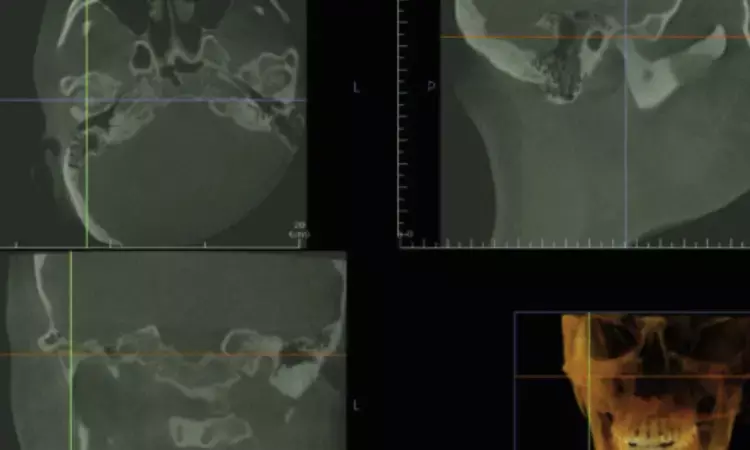- Home
- Medical news & Guidelines
- Anesthesiology
- Cardiology and CTVS
- Critical Care
- Dentistry
- Dermatology
- Diabetes and Endocrinology
- ENT
- Gastroenterology
- Medicine
- Nephrology
- Neurology
- Obstretics-Gynaecology
- Oncology
- Ophthalmology
- Orthopaedics
- Pediatrics-Neonatology
- Psychiatry
- Pulmonology
- Radiology
- Surgery
- Urology
- Laboratory Medicine
- Diet
- Nursing
- Paramedical
- Physiotherapy
- Health news
- Fact Check
- Bone Health Fact Check
- Brain Health Fact Check
- Cancer Related Fact Check
- Child Care Fact Check
- Dental and oral health fact check
- Diabetes and metabolic health fact check
- Diet and Nutrition Fact Check
- Eye and ENT Care Fact Check
- Fitness fact check
- Gut health fact check
- Heart health fact check
- Kidney health fact check
- Medical education fact check
- Men's health fact check
- Respiratory fact check
- Skin and hair care fact check
- Vaccine and Immunization fact check
- Women's health fact check
- AYUSH
- State News
- Andaman and Nicobar Islands
- Andhra Pradesh
- Arunachal Pradesh
- Assam
- Bihar
- Chandigarh
- Chattisgarh
- Dadra and Nagar Haveli
- Daman and Diu
- Delhi
- Goa
- Gujarat
- Haryana
- Himachal Pradesh
- Jammu & Kashmir
- Jharkhand
- Karnataka
- Kerala
- Ladakh
- Lakshadweep
- Madhya Pradesh
- Maharashtra
- Manipur
- Meghalaya
- Mizoram
- Nagaland
- Odisha
- Puducherry
- Punjab
- Rajasthan
- Sikkim
- Tamil Nadu
- Telangana
- Tripura
- Uttar Pradesh
- Uttrakhand
- West Bengal
- Medical Education
- Industry
Fixed Orthodontic Treatment Linked to Increased Pulp Stone Formation: Study

Researchers have discovered in a new study that fixed orthodontic treatment is associated with a higher incidence of pulp stone formation, irrespective of tooth extraction status. These findings may assist clinicians in early detection and monitoring of teeth at risk during orthodontic care. The study was published in the journal of Clinical and Experimental Research by Kosar G. and colleagues.
This research sought to compare pulp stone development in patients undergoing orthodontic treatment with extractions and those treated without extractions. Authors examined panoramic dental radiographs of 80 orthodontic patients treated from 2014 to 2020. The sample consisted of 40 patients in the extraction group and 40 in the non-extraction group, all of whom possessed a complete set of permanent molars. 640 molars were assessed for pulp stones, both pre- and post-treatment.
Analysis of data was performed using McNemar test and Chi-square, with the statistical significance level at p < 0.05. Data analysis was carried out using SPSS software.
Results
• The research found high and significant pulp stone formation after orthodontic treatment in both groups.
• In the extraction group, the rise was significantly higher (p < 0.001), whereas in the non-extraction group, the rise was also significant but less severe (p = 0.02).
• Although the increase in each group was evident, there was no statistically significant difference found between the extraction and non-extraction groups concerning the overall incidence of pulp stone formation (p = 0.09), as it means that extractions do not significantly affect the risk of having pulp stones during orthodontic treatment.
• Gender did not play a role in either group since no difference between males and females was observed for pulp stone frequency (p = 0.392 for extraction; p = 0.451 for non-extraction).
• In the extraction group, first molars were more affected compared to second molars (p = 0.001), whereas in the non-extraction group, the difference was not significant (p = 0.108).
• Also, there was no association detected between the formation of pulp stone and the jaw affected (mandible vs. maxilla) (p > 0.05).
Orthodontic treatment, with or without extractions, greatly enhances the occurrence of pulp stone formation in molar teeth. Such calcifications can complicate endodontic treatment and should be followed closely via radiographic examination during and after orthodontic treatment. The study advises clinicians to be cautious and include pulp health examination as part of routine orthodontic treatment protocols to reduce long-term complications.
Reference:
Gholinezhad, K., Ghorbani, H., Seyedmajidi, S., Sheikhzadeh, S., & Rahmati Kamel, M. (2025). Pulp stone formation following fixed orthodontic treatment: A panoramic radiographic comparison of extraction and non‐extraction approaches. Clinical and Experimental Dental Research, 11(4). https://doi.org/10.1002/cre2.70181
Dr Riya Dave has completed dentistry from Gujarat University in 2022. She is a dentist and accomplished medical and scientific writer known for her commitment to bridging the gap between clinical expertise and accessible healthcare information. She has been actively involved in writing blogs related to health and wellness.
Dr Kamal Kant Kohli-MBBS, DTCD- a chest specialist with more than 30 years of practice and a flair for writing clinical articles, Dr Kamal Kant Kohli joined Medical Dialogues as a Chief Editor of Medical News. Besides writing articles, as an editor, he proofreads and verifies all the medical content published on Medical Dialogues including those coming from journals, studies,medical conferences,guidelines etc. Email: drkohli@medicaldialogues.in. Contact no. 011-43720751


